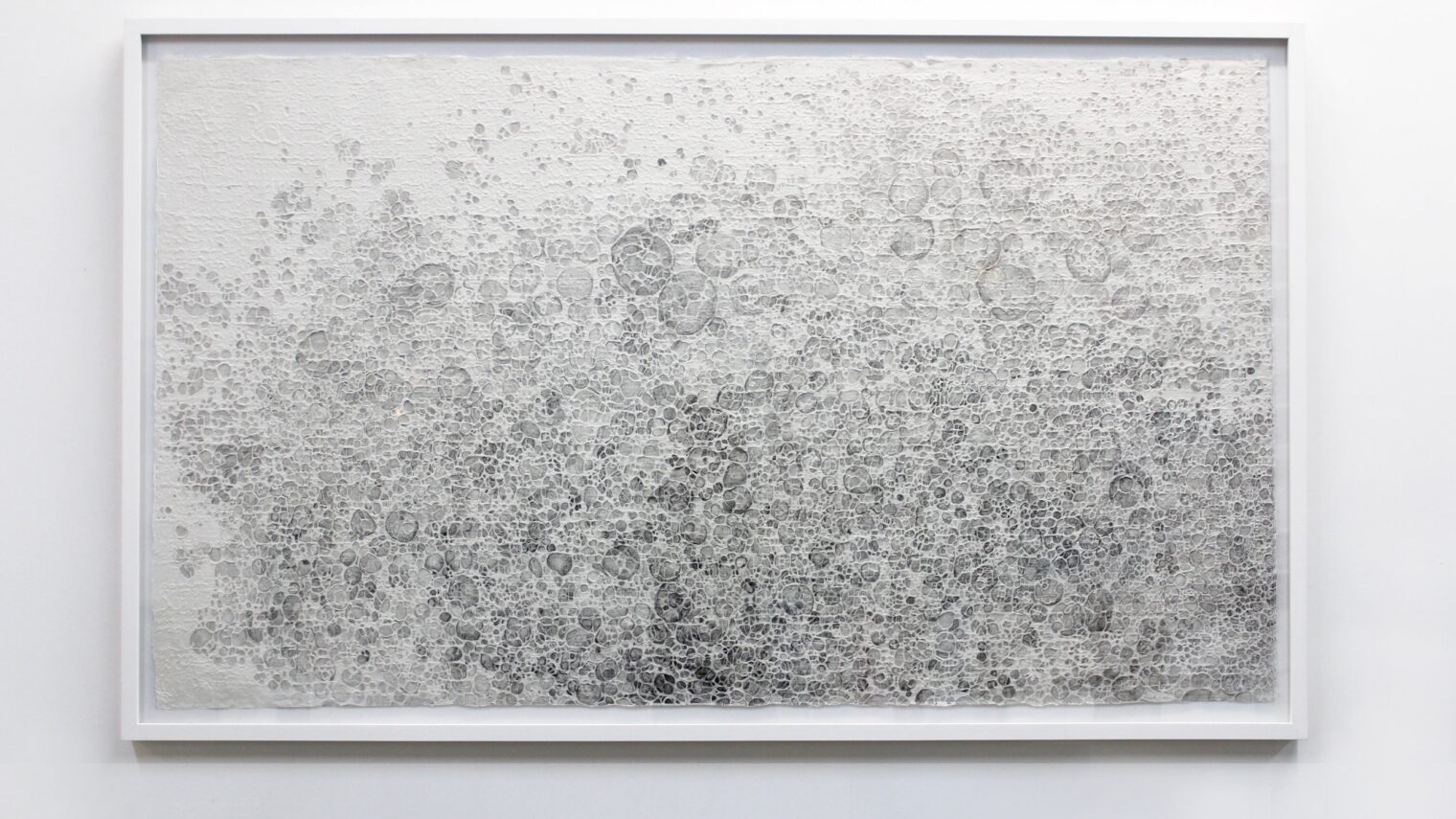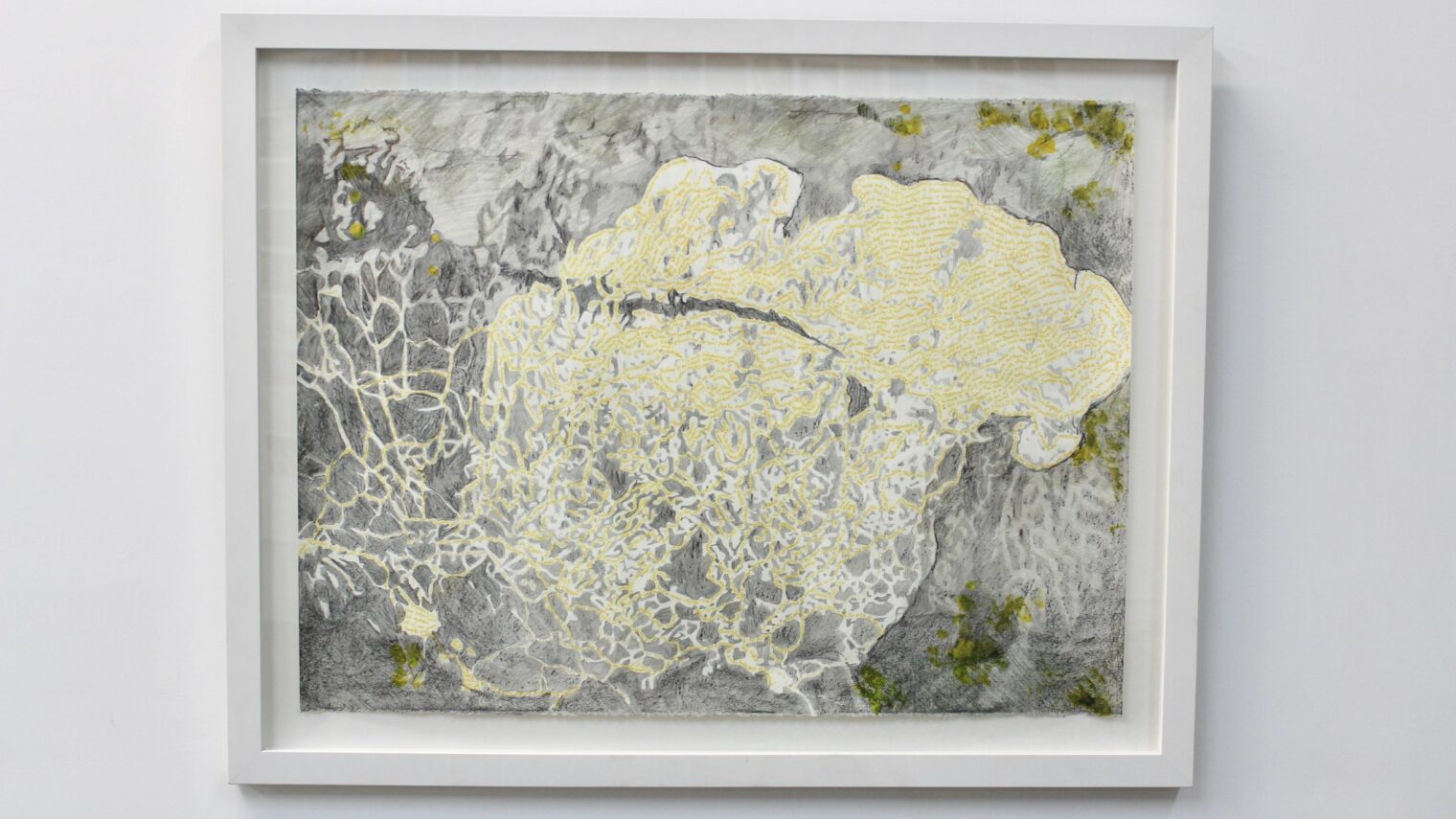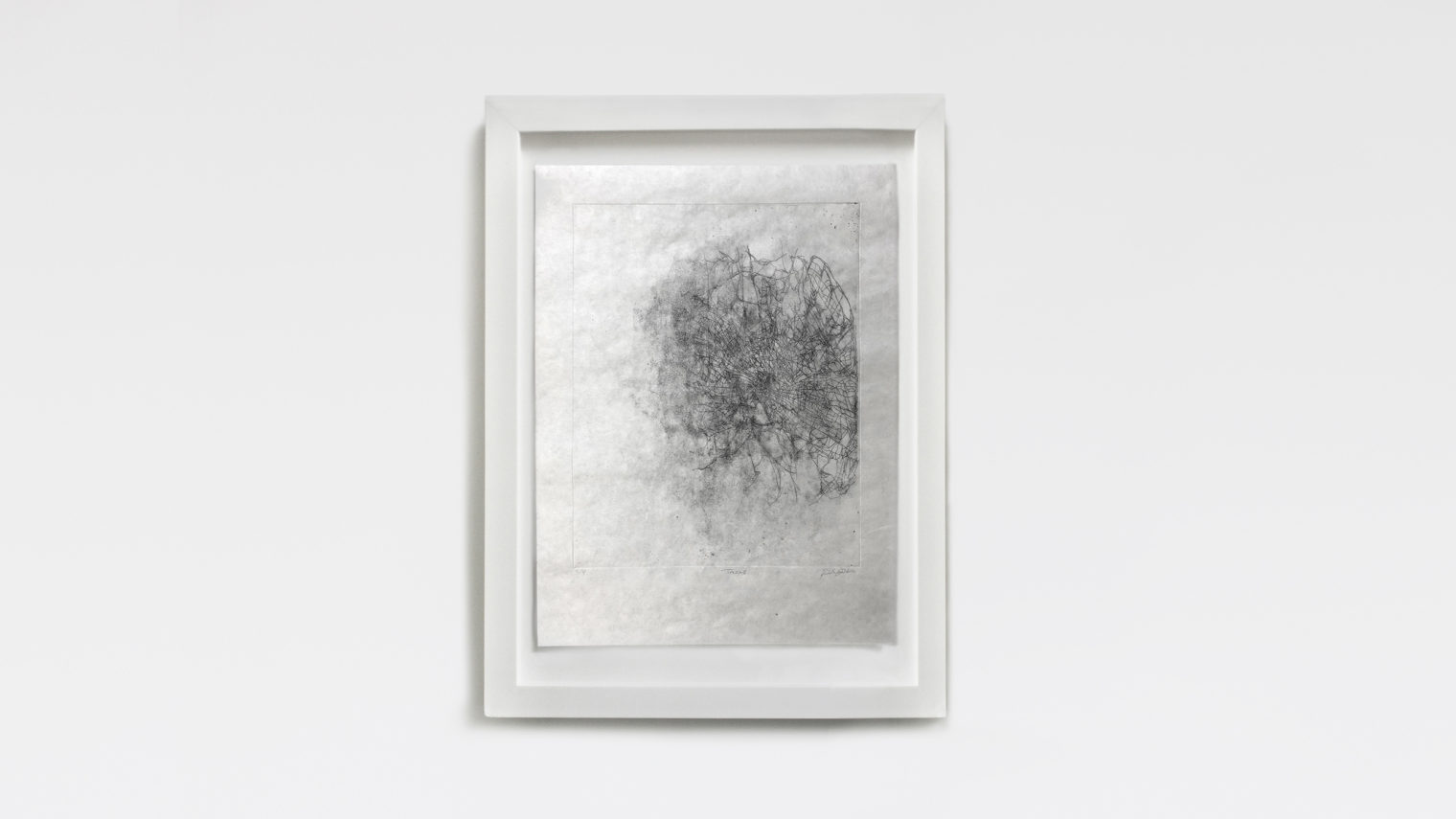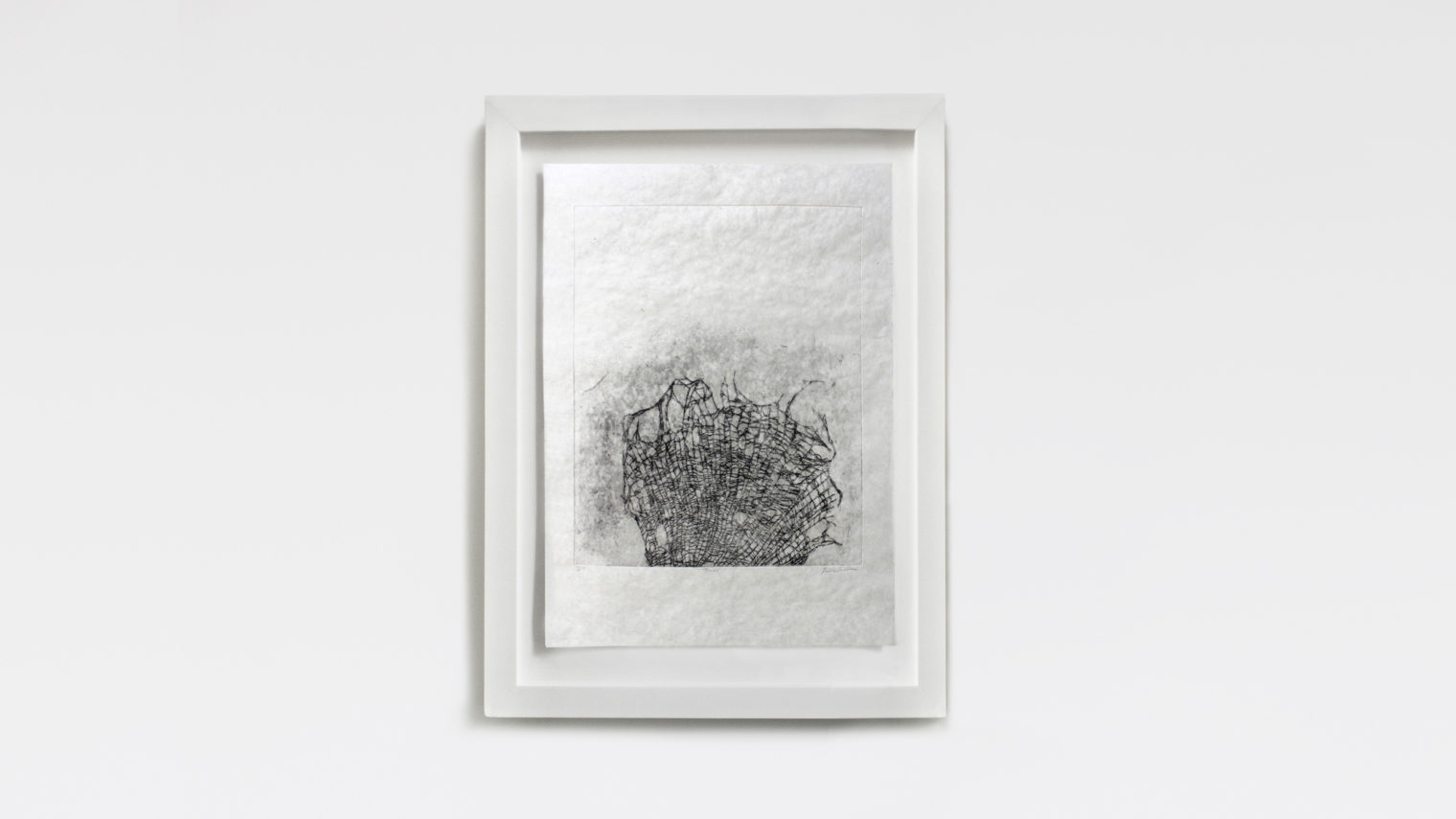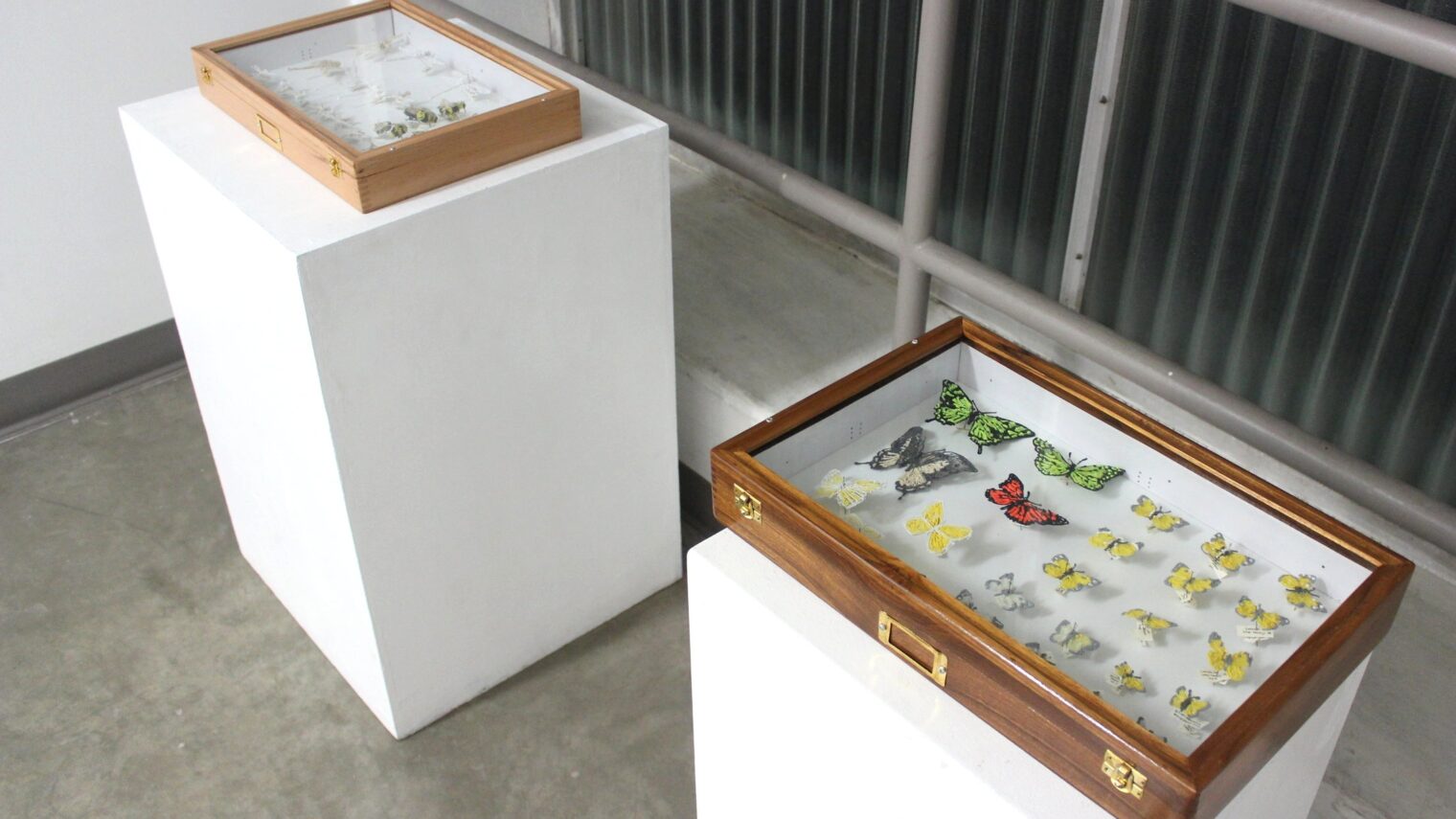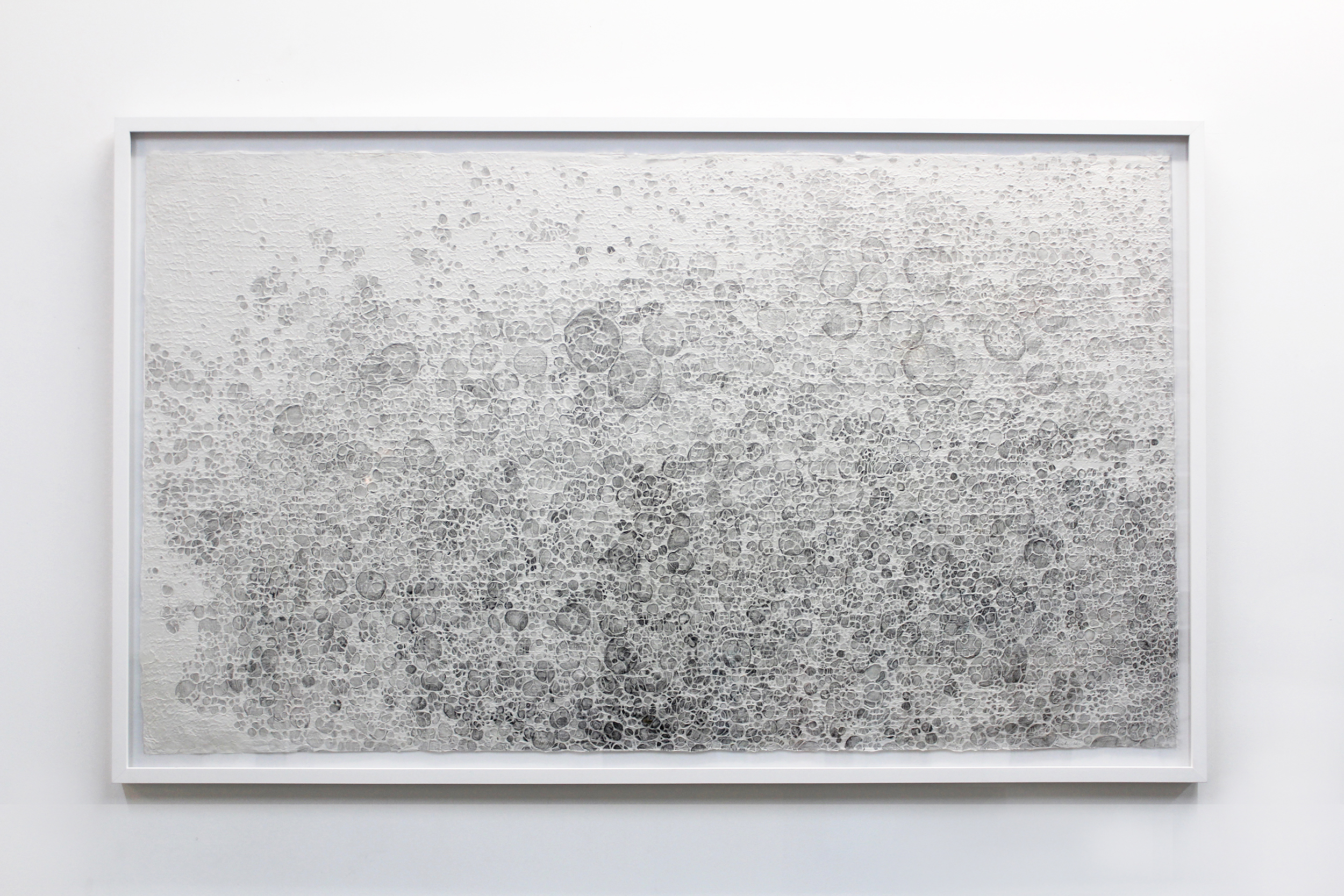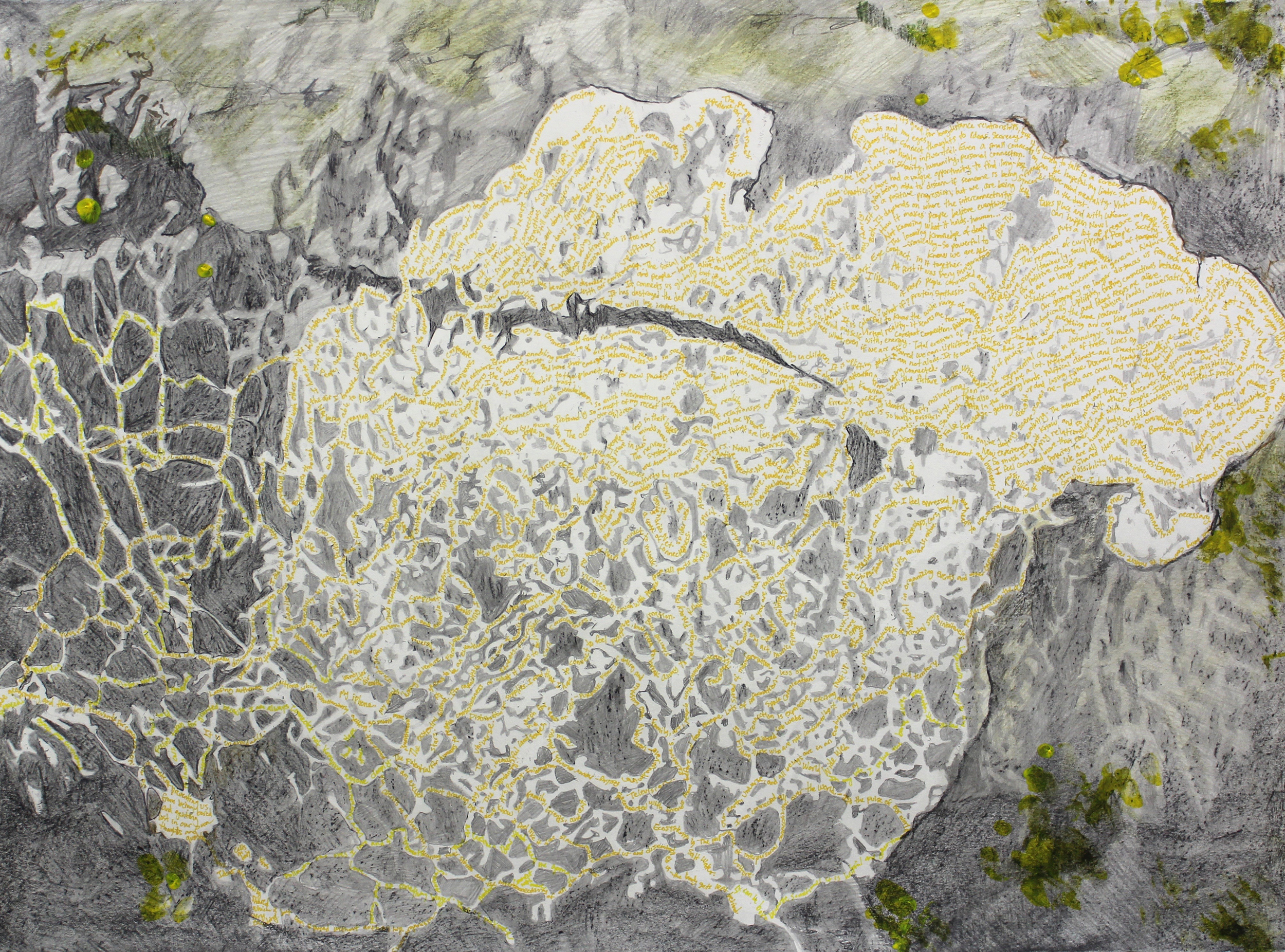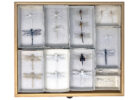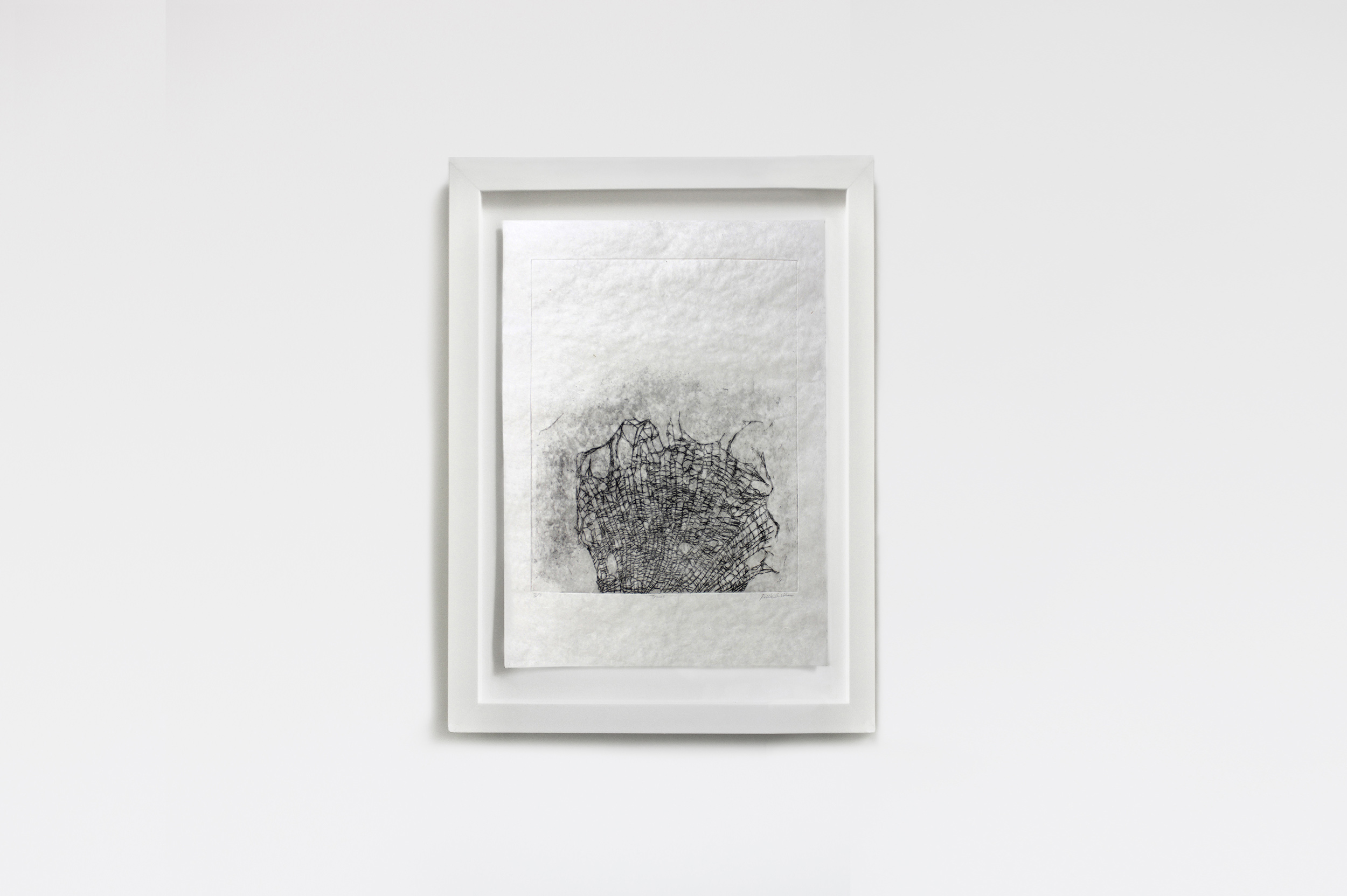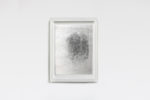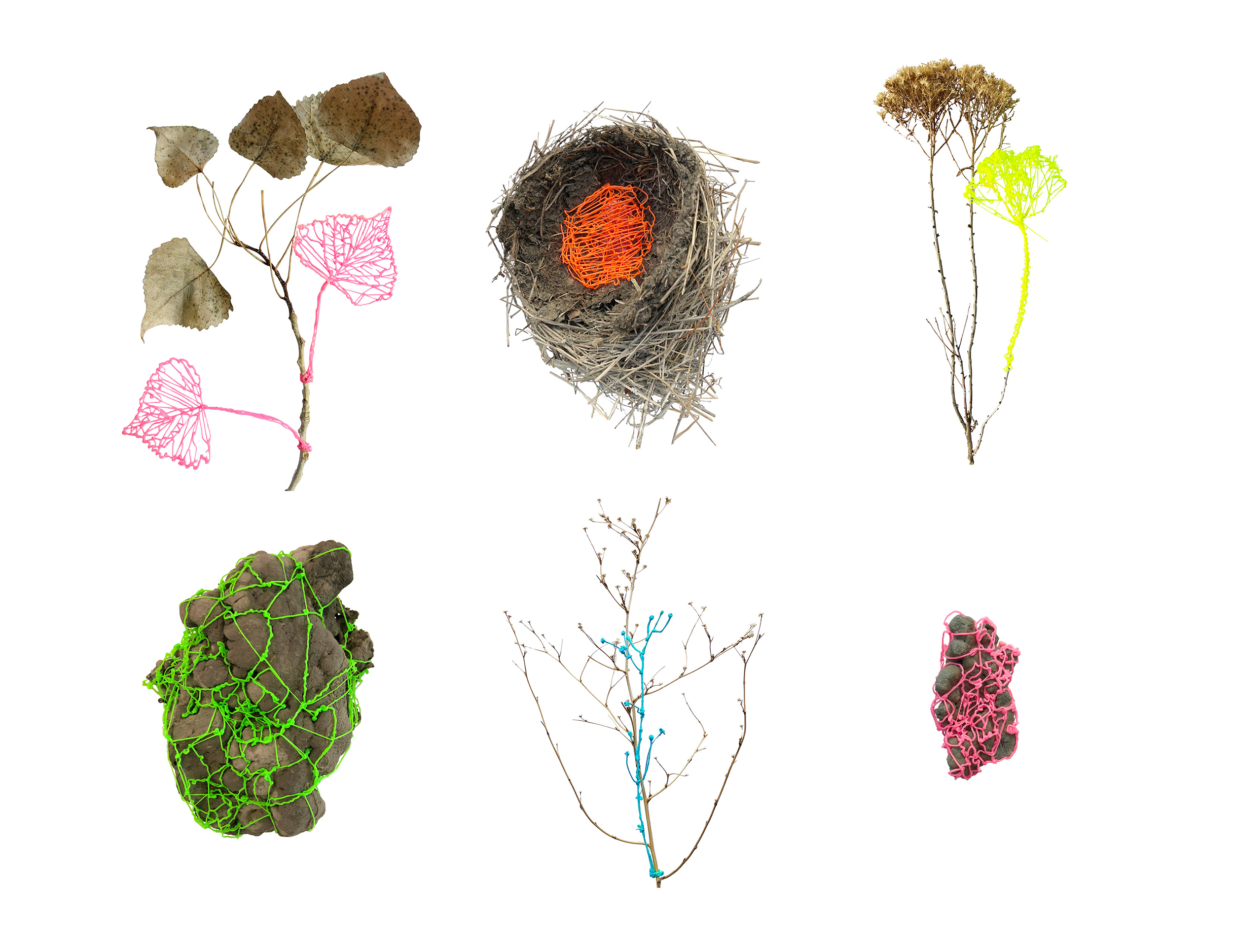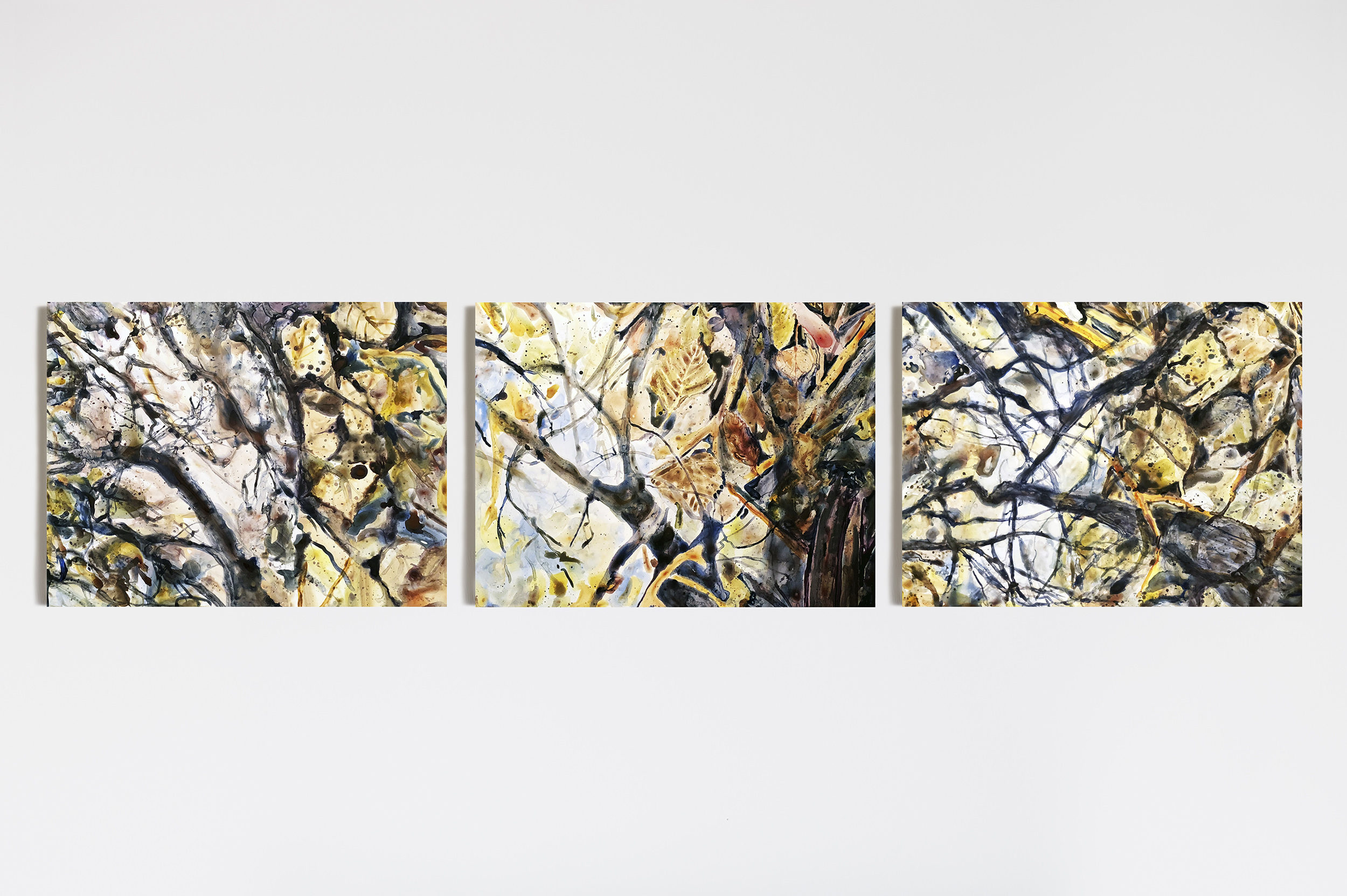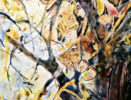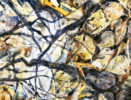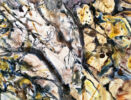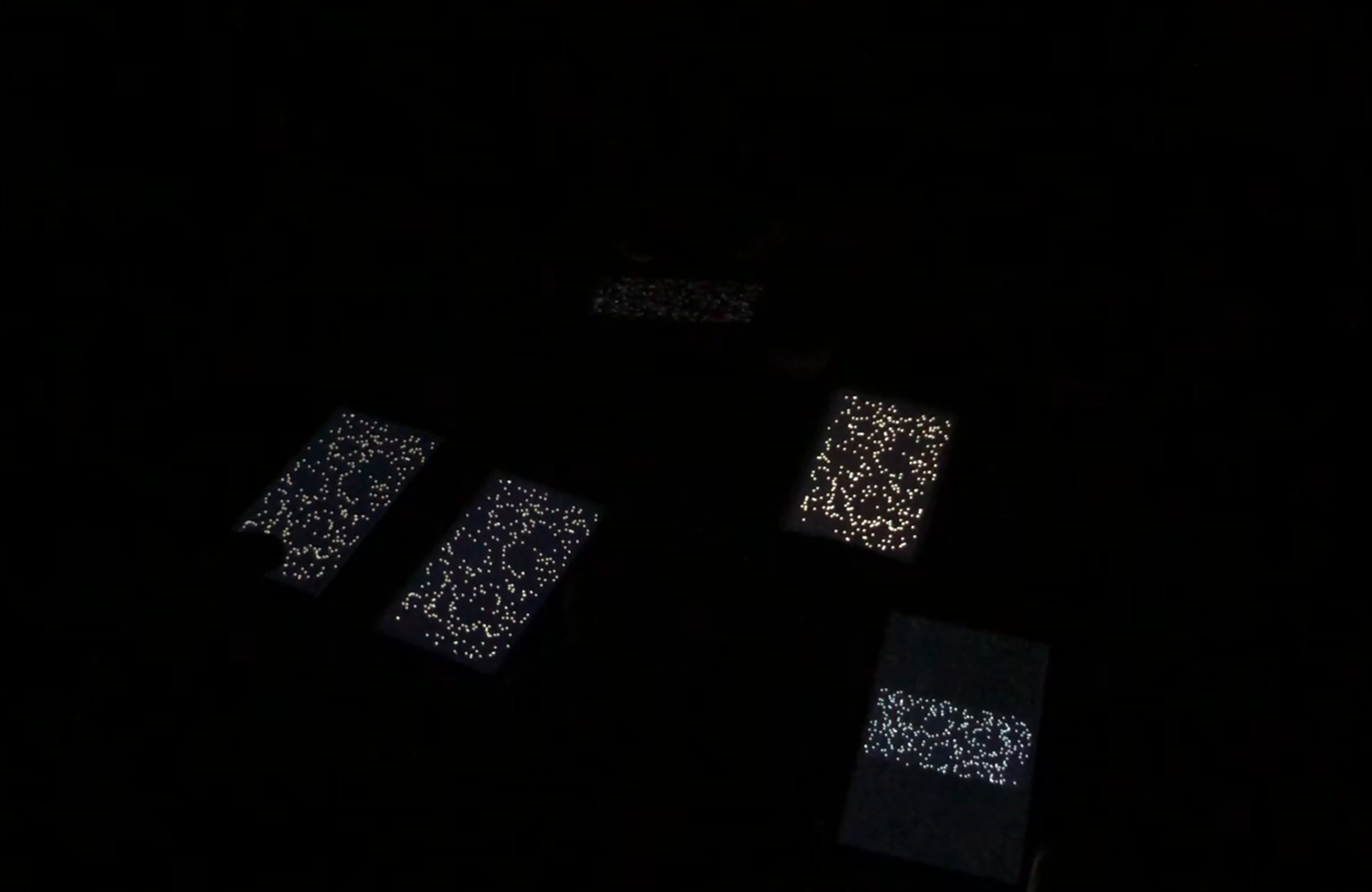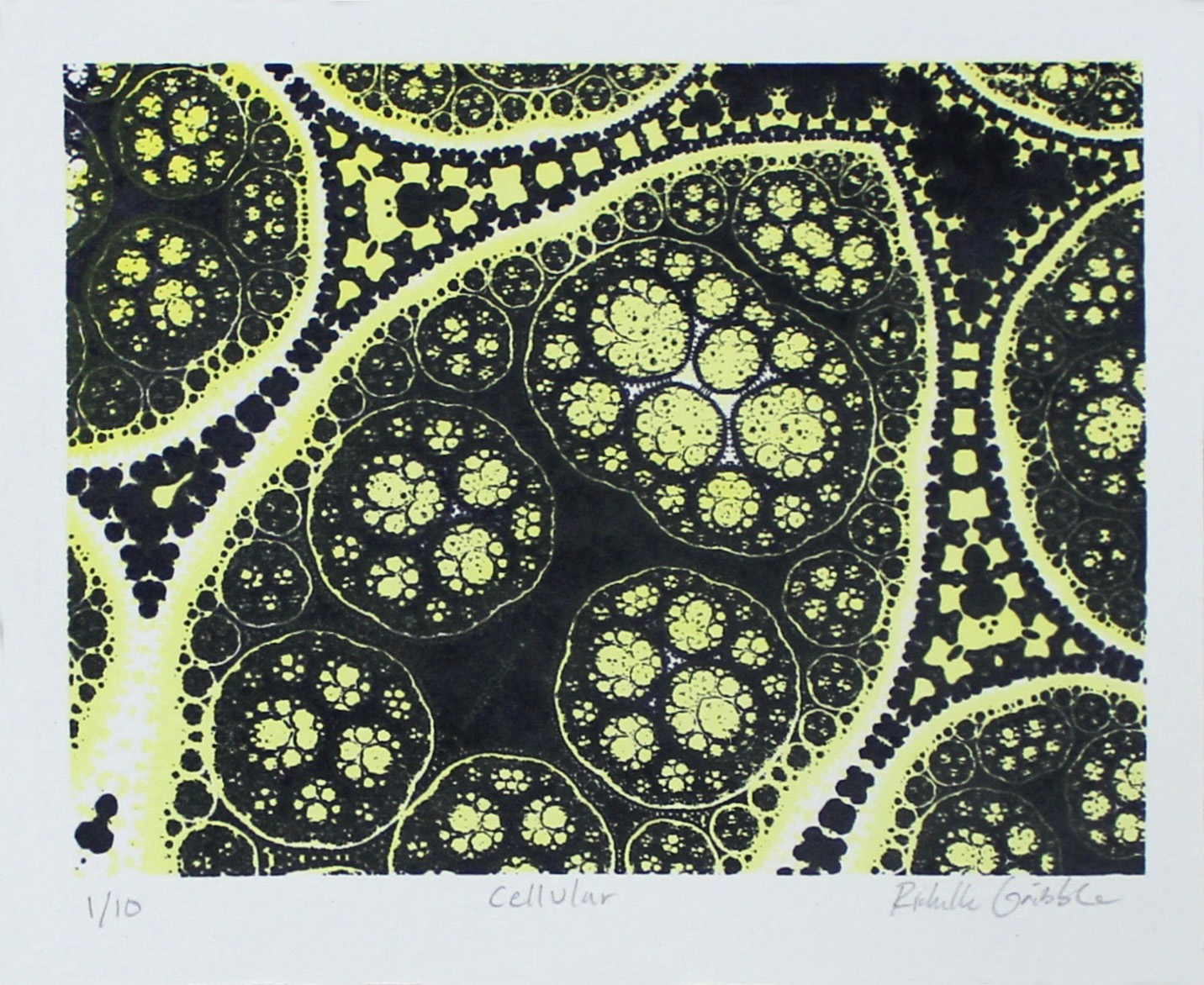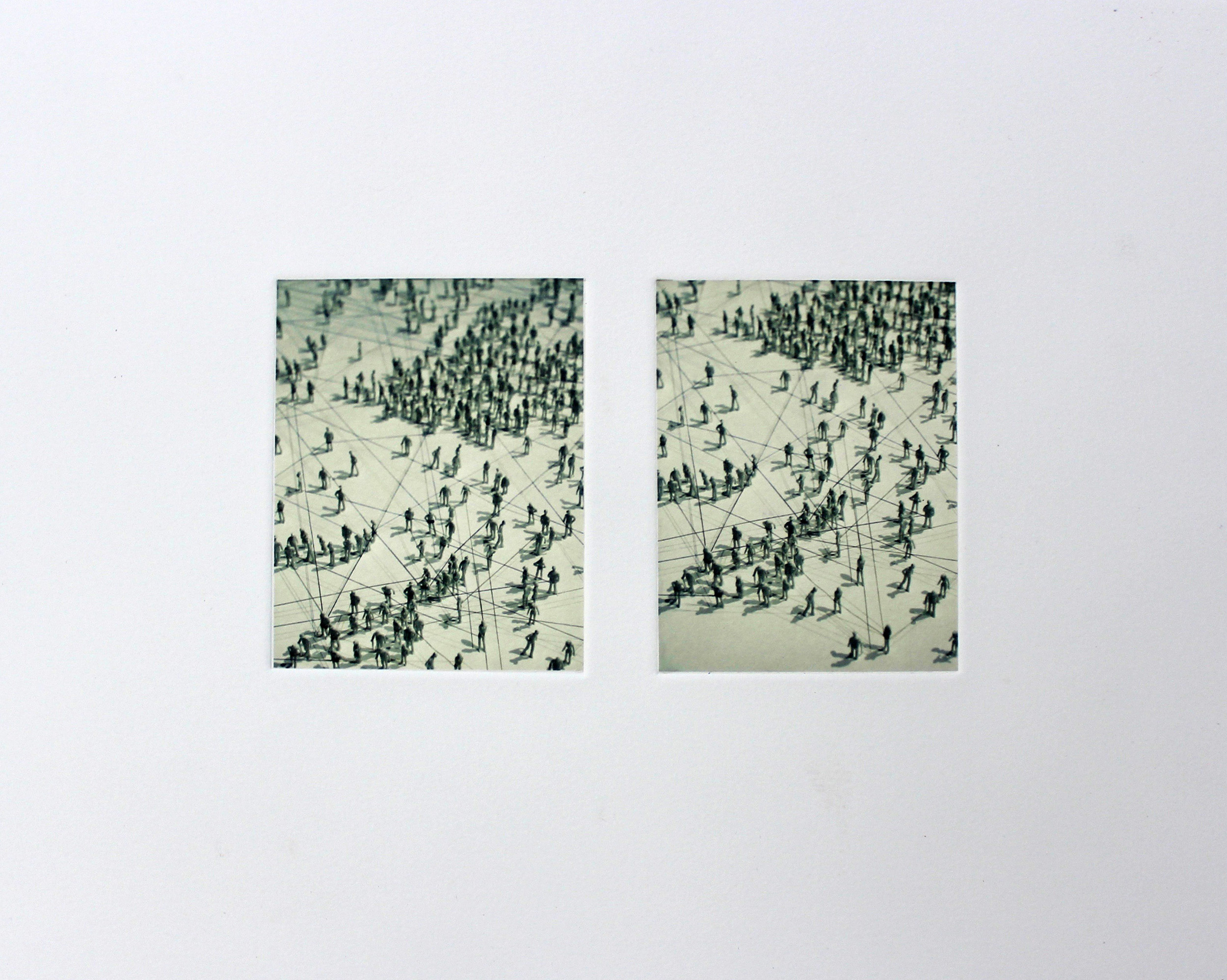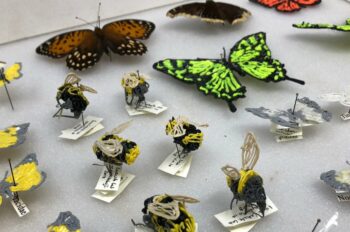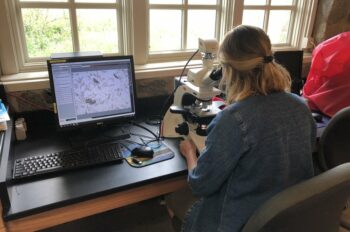“The artists in ‘Spontaneous Emergence of Order’ use scientific rigor to deepen our understanding of the natural world and humans’ relationships to it. For Richelle Gribble, this often involves processes not so different from those used by field researchers to catalogue and categorize flora and fauna, with particular attention to how both have been impacted by human behavior. ”
— Benjamin Sutton, Writer for HyperAllergic
Invisible Structures
Invisible Structures is a series of mixed media works documenting various fractal structures that often go unnoticed or are tangibly invisible. Works examine fractal symmetry found in structures of diatoms under a microscope to intricate fractal formations of frothy foam bubbles. Fractals are geometric shapes or forms that are represented in natural objects, as seen in branching growth patterns in slime mold to transparent tessellations within a dragonfly’s wing.
A fractal is a never-ending pattern, some call it the “thumbprint of god.” Fractals are infinitely complex patterns that are self-similar across different scales. They are created by repeating a simple process over and over in an ongoing feedback loop, with mathematical precision and emergent awe-inspiring patterns. Such fractal forms are found in the transparent lace of a spider’s web to visualizations of our known Universe. It is within these fractal forms that we begin to comprehend a secret order of the natural world.
In Foam, the fractal pattern emerges within the subject and papermaking process itself. The drawing is on handmade kozo paper with a fractal-like texture formed by falling water droplets on the surface of wet kozo fiber. Once dried, the speckled paper dictated the placement of each hand-drawn bubble, forming an intricate graphite foam-scape. Another invisible structure is found in the spiderweb etchings Traces. These etchings are direct transfers of real-life spiderwebs traced onto hard-ground copper plates and printed on handmade paper. The spiderwebs are true to their design in nature, revealing intricate fractal forms within its spiral.
Self-Organization is a text-based drawing compiling dozens of crowd-sourced responses from people responding to their experience and understanding of connectivity. Their words became the growing sprawl of a yellow slime mold fractal pattern, placing words about connectivity into a connective structure. Similar branching patterns are also found in fractal patterns in the wings of 3D-printed insects archived in Insect Chart-1 and Insect Chart-2. Each insect is made from a continuous strand of printed plastic, tracing the real-life insect collections at Iowa Lakeside Laboratory. Lastly, a series of photographs of diatoms Invisible Forms observed and imaged under a microscope illuminate fractal symmetry that exists in the natural world, found at the micro-scale.

